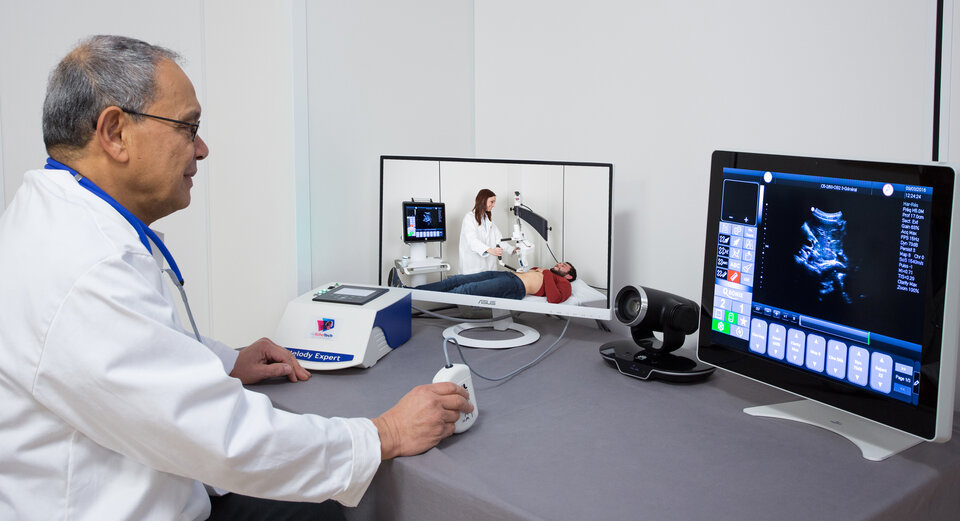Ultrasound for space offers remote diagnosis to patients on Earth
Radiologists are investigating people’s medical conditions and pregnancies remotely thanks to an ESA-backed robotic technology.
The set-up enables medics to care for some patients at a distance during the coronavirus pandemic.
The system is already being used by rural hospitals, care homes and prisons across Europe and in Canada to investigate cardiac, abdominal, pelvic and urinary tract conditions.
It could also be used as an alternative to chest X-rays to diagnose pneumonia in patients infected by COVID-19, relieving the pressure on hospital facilities.

Patients visit a local health centre, where a healthcare professional with no ultrasound training positions a robotic arm on the patient.
A trained radiologist, cardiologist or midwife, based many kilometres away, then manipulates a local dummy probe to move the robotic arm. The expert can alter the settings of the ultrasound machine remotely to get the best possible images.
The ultrasound image is displayed on a screen in real time and a videoconferencing system allows them to speak to the patient.
“This tool makes sense in the face of the challenge for combating the COVID-19 virus by allowing equipped places to establish additional barriers to its spread,” says Eric Lefebvre, who founded the French firm AdEchoTech that developed the Melody ultrasound system.
“It can protect isolated patients by avoiding the need to move them, thus keeping them at a distance from contamination risks. It also allows the expert to intervene and bring their expertise to remote locations with infected patients, thus protecting the expert from possible contamination, especially since a conventional ultrasound requires significant proximity to the patient.
“The Melody device enables the mobilisation of quarantined experts and helps experts in other regions to provide support. Finally, thoracic ultrasound shows very promising results in helping diagnose pneumonia in patients infected by COVID-19 and represents a reliable alternative to the chest scanner when the scanner is not available.”
AdEchoTech, based in Vendôme, used technology originally developed to provide high-quality ultrasound medical images in space, to support life sciences experiments with astronauts. It was part funded by ESA and the French space agency, CNES, which is an equity investor in the company.
“ESA has been active for more than 20 years in the field of telemedicine and supported the development of this tele-echography concept from its early stage up to demonstrations in a real-life environment,” says Arnaud Runge, medical engineer who supervised the project.
“Seeing that this technology is used on the field in the fight against the COVID-19 virus is a great satisfaction.”
The system has been licenced by the US Federal Drugs Agency, holds a European CE Mark and is approved for use by Health Canada.


